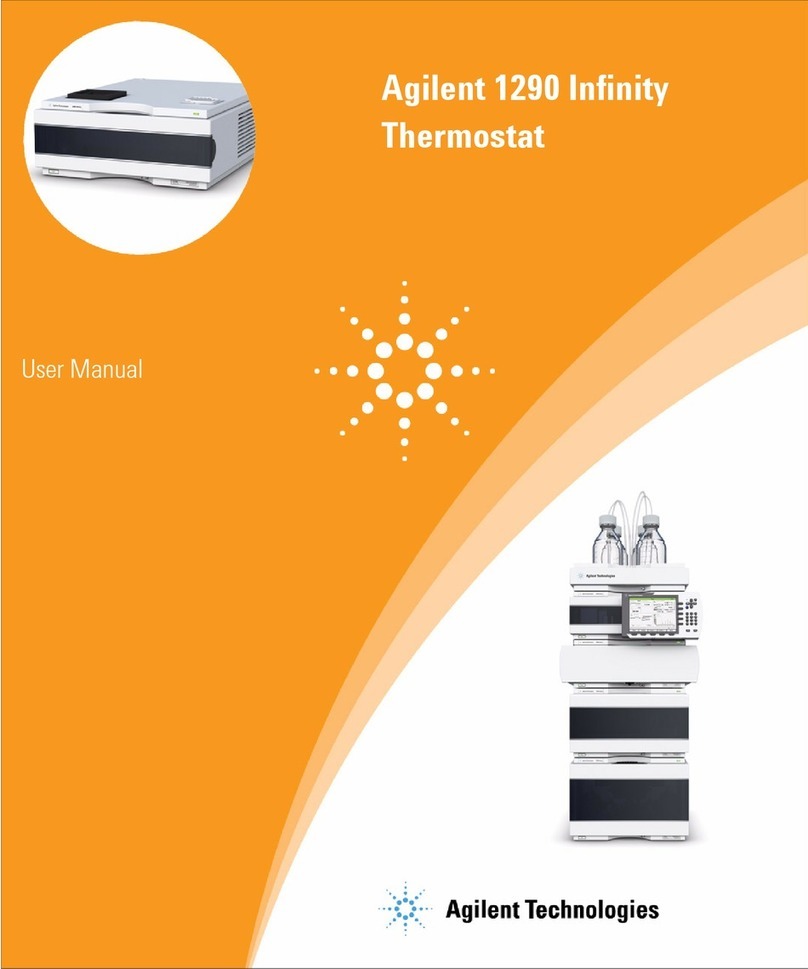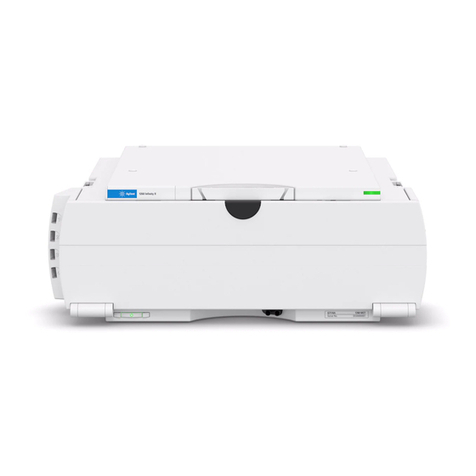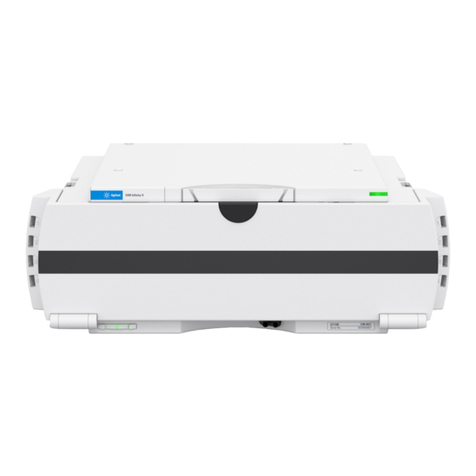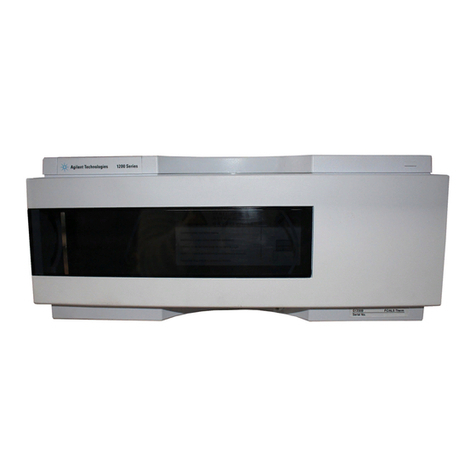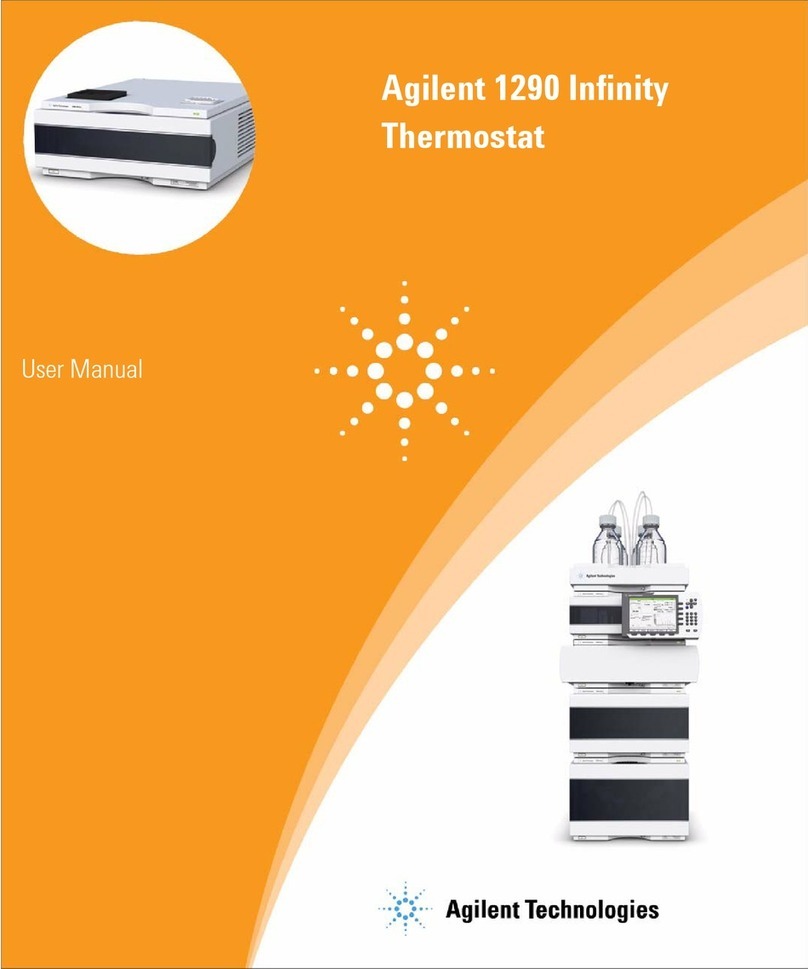
2 1100 Series AT Reference Manual
Notices
© Agilent Technologies, Inc. 2002
No part of this manual may be reproduced in
any form or by any means (including elec-
tronic storage and retrieval or translation
into a foreign language) without prior agree-
ment and written consent from Agilent
Technologies, Inc. as governed by United
States and international copyright laws.
Manual Part Number
G1330-90002
Edition
Edition 07/02
Printed in Germany
Agilent Technologies
Hewlett-Packard-Strasse 8
76337 Waldbronn, Germany
Software Revision
This guide is valid for A.01.xx revisions of
the Agilent 1100 Series Autosampler Ther-
mostat software, where xx refers to minor
revisions of the software that do not affect
the technical accuracy of this guide.
Warranty
The material contained in this docu-
ment is provided “as is,” and is sub-
ject to being changed, without notice,
in future editions. Further, to the max-
imum extent permitted by applicable
law, Agilent disclaims all warranties,
either express or implied, with regard
to this manual and any information
contained herein, including but not
limited to the implied warranties of
merchantability and fitness for a par-
ticular purpose. Agilent shall not be
liable for errors or for incidental or
consequential damages in connec-
tion with the furnishing, use, or per-
formance of this document or of any
information contained herein. Should
Agilent and the user have a separate
written agreement with warranty
terms covering the material in this
document that conflict with these
terms, the warranty terms in the sep-
arate agreement shall control.
Techn ology Lice ns es
The hardware and/or software described in
this document are furnished under a license
and may be used or copied only in accor-
dance with the terms of such license.
Restricted Rights Legend
Software and technical data rights granted
to federal government customers include
only those rights customarily provided to
end user Customers of Software. Agilent
provides this customary commercial license
in Software and technical data pursuant to
FAR 12.211 (Technical Data) and FAR 12.212
(Computer Software) and, for Department of
Defense purchases, DFARS 252.227-7015
(Technical Data - Commercial Items) and
DFARS 227.7202-3 (Rights in Commercial
Computer Software or Computer Software
Documentation). If a federal government or
other public sector Customer has a need for
rights not conveyed under these terms, it
must negotiate with Agilent to establish
acceptable terms in a written agreement
executed by all relevant parties.
Safety Notices
CAUTION
A CAUTION notice denotes a haz-
ard. It calls attention to an operat-
ing procedure, practice, or the like
that, if not correctly performed or
adhered to, could result in damage
to the product or loss of important
data. Do not proceed beyond a
CAUTION notice until the indicated
conditions are fully understood and
met.
WARNING
A WARNING notice denotes a
hazard. It calls attention to an
operating procedure, practice, or
the like that, if not correctly per-
formed or adhered to, could result
in personal injury or death. Do not
proceed beyond a WARNING
notice until the indicated condi-
tions are fully understood and
met.
